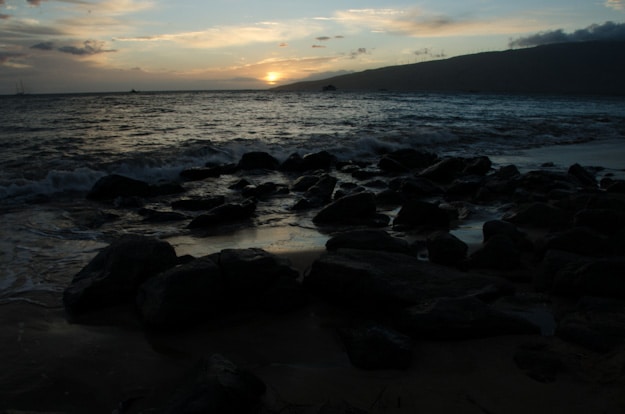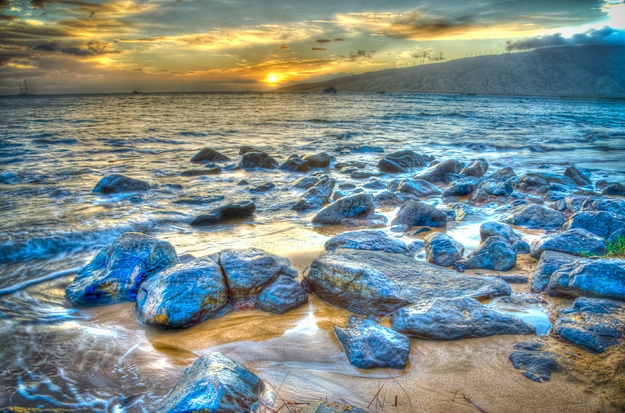Not long ago, HDR was the domain of photographers who had manual control over their cameras, esoteric software on their computers and some serious artistic chops in being able to decide where light and shadow should fall within an image. Now, HDR imagery is everywhere and it’s all the rage. It might even be built into your smartphone’s camera, your point-and-shoot or DSLR.
But what is HDR anyway? HDR stands for High Dynamic Range. Here’s the dilemma. The human eye sees about 20 “stops” (or changes in brightness) of light, so we’re able to make out details in the brightest areas (called highlights) and the shadows at the same time. A camera on the other hand, is only capable of about half that many stops, so the user has to choose between the highlights or the shadows, usually sacrificing one for the other.
If you want to capture the gorgeous colors in the sky during a sunset at the beach, everything in the foreground of your photo (rocks, sand, people, etc.) will most likely end up dark, or “underexposed” as photographers say. Conversely, if you try to capture the foreground while your camera is pointed in the direction of something as bright as the sun, the camera has to open up its aperture to allow more light in, causing the sky and everything in it to end up being pure white, or “blown out.”

Sunset on the beach in Kihei, Maui, Hawaii with the sky exposed correctly, sacrificing the sand and rocks in foreground.

The same sunset shot on the beach in Kihei, the camera exposing for the foreground elements, sacrificing all the details in the sky.
At any given time of the day, the sky can be 2-3 stops brighter than the foreground of a shot (or more if the sun is in the frame). You face a similar problem when you’re shooting indoors during the day. The windows usually end up white, because the camera tries to expose the interior. If you tried to expose the scenery outside the windows, the interiors end up in silhouette.
HDR, or High Dynamic Range, is a process that blends several photos together in software, taken with the highlights and shadows exposed correctly, to create a composite image where everything looks the way it’s supposed to. Essentially, you take a good photo of the bright areas, sacrificing the dark, then another photo of the dark areas, sacrificing the bright, and perhaps one or two others in-between, feed them to the software, then tell it how dark the darks are, how bright the brights are, how saturated the colors are, etc.

Sunset, Kihei, Maui, realistically rendered using 7 exposures, including the 2 above, blended and tone mapped in Photomatix Pro, then finished in Adobe Lightroom.
Done professionally, with software such as Adobe Photoshop, Photomatix Pro from HDRsoft or HDR Efex Pro from Nik Software, you can get amazing results. And because the photographer has full control over all the “tones” of light and dark, and other factors such as saturation, a photo can be rendered realistically, or surrealistically to create a piece of art.

Sunset, Kihei, Maui in HDR. A surreal rendering of the same image as the above.
Some cameras now do a fairly good job just by themselves, such as the Canon Powershot G12 and Nikon D5100 DSLR, which have built-in HDR modes. The iPhone has HDR built into its camera, and for even better control, apps such as TrueHDR, Pro HDR and Camera+ do a great job. Many of these apps run on the Android as well.
Next time you’re in a situation where you have to choose between light and dark in a photo, check if your camera or smartphone is capable of HDR. Download an app if you have to, and turn it on. Get creative. Don’t be afraid to experiment. It’ll change the way you view the world through your photos.
COMMENTS